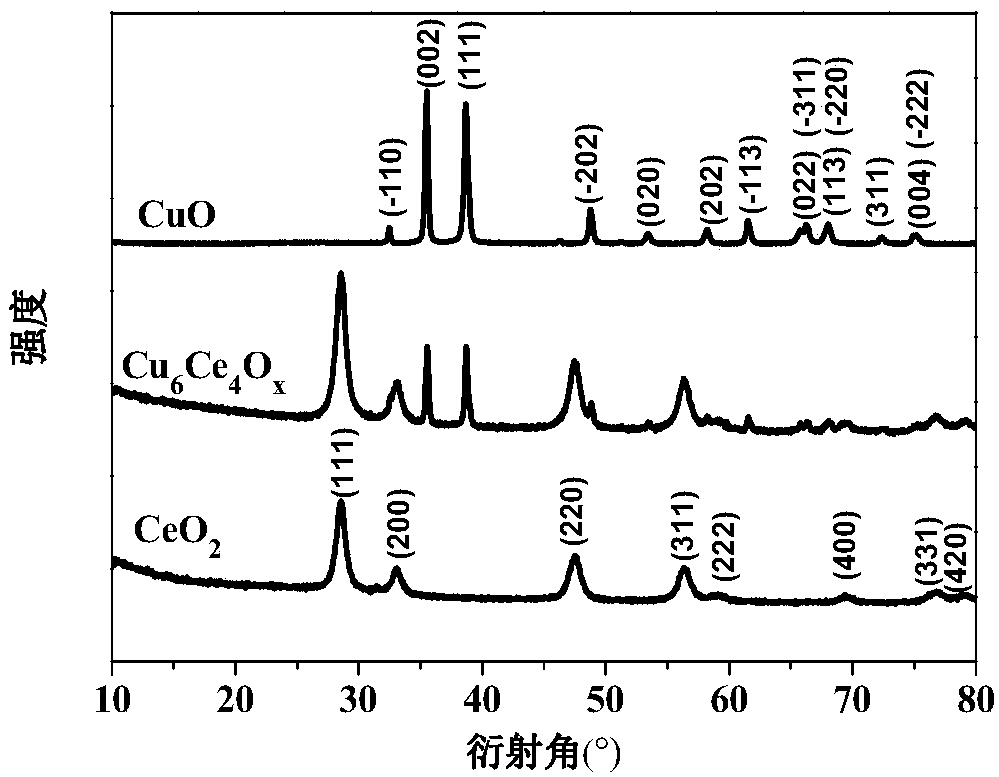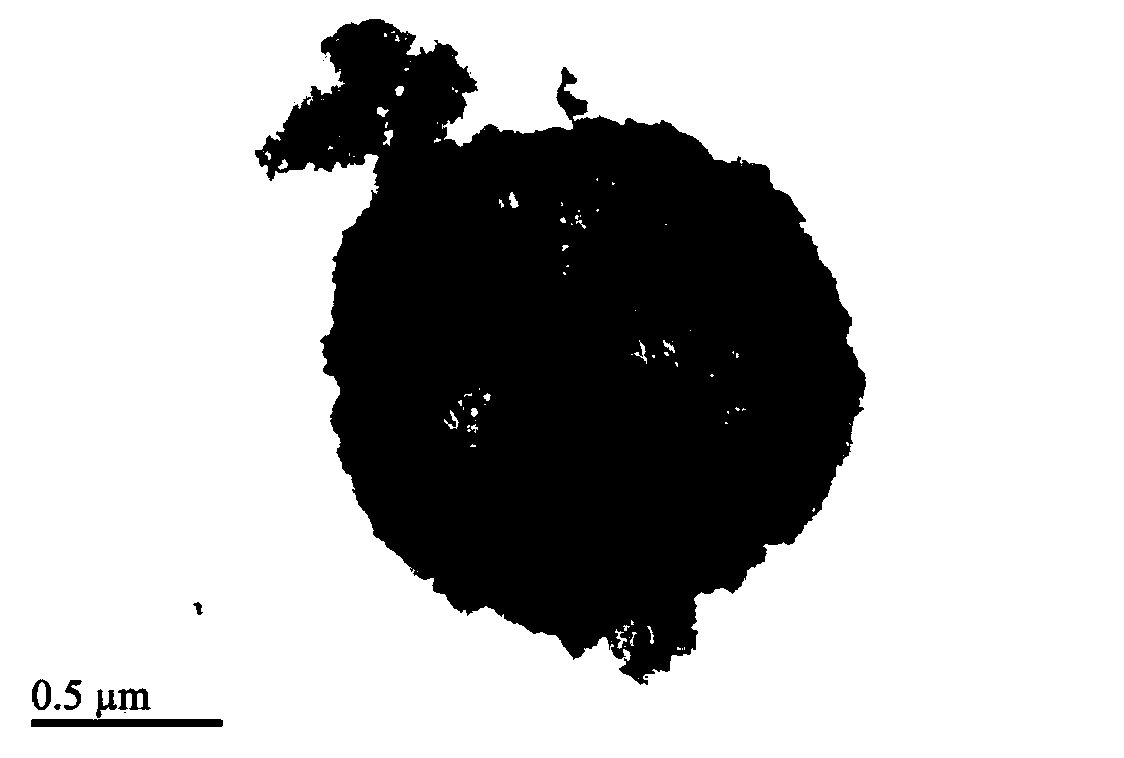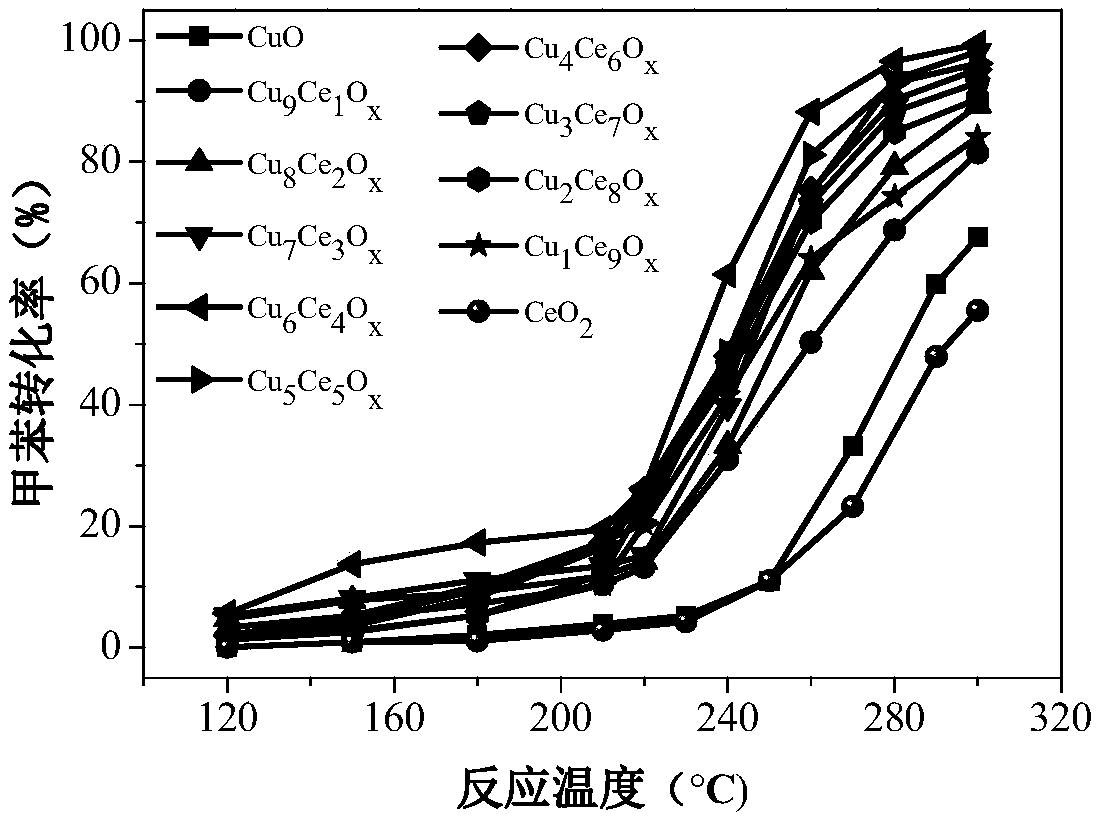Hollow-structure CuCeOx bimetallic oxide catalyst and preparation method thereof
A bimetallic oxide, hollow structure technology, applied in metal/metal oxide/metal hydroxide catalysts, physical/chemical process catalysts, chemical instruments and methods, etc., can solve the problem of poor uniformity of the control hollow structure and many influencing factors , poor controllability and other problems, to achieve the effect of superior catalytic activity, high controllability and low pollution
- Summary
- Abstract
- Description
- Claims
- Application Information
AI Technical Summary
Problems solved by technology
Method used
Image
Examples
Embodiment 1
[0028] Take 1.0g CuSO respectively 4 ·5H 2 O. Dissolve 4.0g of glucose in 30mL of deionized water, transfer to a 50mL hydrothermal kettle and heat to 160°C, keep for 36h, then cool to room temperature, wash and dry with deionized water several times, and then carbon-assisted CuO metal oxidation can be obtained. material precursor; then placed in a muffle furnace and baked at 550°C for 4h to obtain hollow CuO microspheres.
Embodiment 2
[0030] Take 0.8g Ce(NO 3 ) 3 ·6H 2 O. Dissolve 3.6g of glucose in 30mL of deionized water, transfer to a 50mL hydrothermal kettle and heat to 180°C, keep it for 24h, then cool to room temperature, wash with deionized water several times, and dry to obtain carbon-assisted CeO 2 Metal oxide precursor; then placed in a muffle furnace and baked at 550 ° C for 4 hours to obtain a hollow structure CeO 2 Microspheres.
Embodiment 3
[0032] Take 0.33g Ce(NO 3 ) 3 ·6H 2 O, 0.275g Cu(NO 3 ) 2 ·3H 2 O. Dissolve 4.0g of glucose in 30mL of deionized water, transfer to a 50mL hydrothermal kettle and heat to 180°C, keep for 24h and then cool to room temperature, wash and dry with deionized water several times to obtain carbon-assisted CuCeO x Double metal oxide precursor; then placed in a muffle furnace at 550 ° C for 4 hours to obtain a hollow structure Cu 6 Ce 4 o x Microspheres.
[0033] figure 1 The X-ray diffraction patterns of Examples 1-3 are given. It can be seen that the obvious CuO (JPCDS: 00-045-0937) and CeO 2 (JPCDS: 03-065-2975), hollow structure Cu 6 Ce 4 o x Microspheres also exhibit corresponding diffraction characteristic peaks. Further to the hollow structure Cu 6 Ce 4 o x Microspheres were characterized by transmission electron microscopy, and it can be seen that there are obvious micron-scale hollow structures ( figure 2 ).
PUM
 Login to View More
Login to View More Abstract
Description
Claims
Application Information
 Login to View More
Login to View More - R&D
- Intellectual Property
- Life Sciences
- Materials
- Tech Scout
- Unparalleled Data Quality
- Higher Quality Content
- 60% Fewer Hallucinations
Browse by: Latest US Patents, China's latest patents, Technical Efficacy Thesaurus, Application Domain, Technology Topic, Popular Technical Reports.
© 2025 PatSnap. All rights reserved.Legal|Privacy policy|Modern Slavery Act Transparency Statement|Sitemap|About US| Contact US: help@patsnap.com



